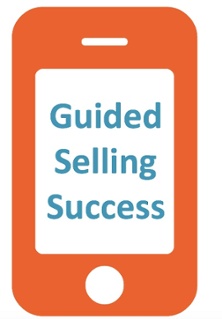 As technology increasingly provides insight into our buyers’ journeys, Marketing gains an opportunity to build a strong partnership in helping Sales drive revenue. Marketers have focused on Buyer Persona and Journey research to create better, deeper understanding of buyers in order to create more impactful marketing programs. But taking the value of your marketing programs to the next level requires supporting more than the buying audience. You must also support the sales process in a way that works for Sales.
As technology increasingly provides insight into our buyers’ journeys, Marketing gains an opportunity to build a strong partnership in helping Sales drive revenue. Marketers have focused on Buyer Persona and Journey research to create better, deeper understanding of buyers in order to create more impactful marketing programs. But taking the value of your marketing programs to the next level requires supporting more than the buying audience. You must also support the sales process in a way that works for Sales.
In B2B sales, guided selling is the practice of providing Sales Teams with recommended actions at each stage of the sales process to help them advance a sale to a successful close. Marketing’s role in guided selling is fundamental because Marketing owns crafting the buying experience and the content to support that experience online and offline. Too often, Marketing misses the mark by considering their job done when a qualified lead, a new piece of content or a sales tool is delivered.
In your company, do Sales reps often modify the marketing content? Or perhaps even create their own content? Do they host events without alignment with the marcom calendar? Do they make up their own messaging when presenting? If so, this is likely a signal that collaboration with Sales is needed to improve the impact of your programs.
Follow these 3 steps to align marketing deliverables to Sales and aid guided selling:
1. Get to know the players. It’s critical to understand the motivations, perceptions and fears of your Sales Team (just like you would for your buyers). Taking a close look at their needs will position you to create content they find helpful.
2. Listen, learn and share. Sales speaks to buyers more than anyone, making them the in-house experts in what makes prospects tick. Your Buyer Personas should include input from Sales as well as new insights learned from your own research and validation. Have a process for gathering info they already know, and share what you learn in order to encourage an open dialogue.
2. Understand and support the Sales process. Engaging buyers in dialogue throughout the Sales process is a key goal of Sales. In order to support them, you need to understand the process they use to interact with buyers. Just like you would map out the buying experience you want to see on a website, mapping out how Sales views the sales cycle and their strategies, tactics and tools in creating engagement will help you to understand their needs. Here’s an example:
- Your VP of Sales walks you through a sales cycle that involves a Needs Analysis stage. Part of that stage requires the sales reps to “understand the business problem.” Think of your marketing plan as a support function for this. While the rep is trying understand what problem the buyer has that your company can help them solve, the Buyer is also likely to be in the “Learning” phase of their journey, trying to understand how other people have solved this problem and the overall landscape. Understanding the intersection of what the Buyer needs, the Sales Process and what Sales needs to successfully advance their sale will help you create the most useful content. Perhaps you create a piece of collateral that maps business problems to solutions, a primer for the Buyer and a great excuse for the sales rep to open dialogue with someone actively learning.
Get to know your Sales leaders, team and processes. Be purposeful about creating programs that help guide Sales on how to open dialogue, create credibility or support a critical hurdle. Taking this approach will increase alignment between Marketing and Sales, while making a meaningful contribution to your company’s revenue goals.

